Living Well: Strategies for Thriving in the Pursuit of Happiness
In today's fast-paced world, the pursuit of happiness and fulfillment has become a universal aspiration. We all seek a life that is rich in meaning, joy, and purpose—a life where we not only survive but thrive. This pursuit of living well goes beyond mere existence; it is about embracing life's challenges, nurturing our well-being, and finding fulfillment in every moment. In this blog post, we'll explore strategies for thriving in the pursuit of happiness and living well, offering insights and practical tips to help you cultivate a life that is deeply satisfying and meaningful.
Defining Living Well
Living well is more than just the absence of suffering or the presence of fleeting pleasures. It is a holistic concept that encompasses physical, mental, emotional, and spiritual well-being. Living well means experiencing a good quality of life, feeling satisfied with one’s life, and having a positive sense of well-being.
Living well involves aligning our actions, values, and goals with our deepest desires and aspirations. It means cultivating resilience in the face of adversity, fostering meaningful connections with others, and pursuing personal growth and fulfillment. Living well is about finding balance, joy, and purpose in our daily lives, regardless of the circumstances we may encounter.
Understanding Happiness
Understanding Happiness
Happiness, often considered the ultimate goal of human existence, is a complex and multifaceted phenomenon that has been studied and debated for centuries. From ancient philosophical inquiries to modern psychological research, scholars and thinkers have sought to understand the nature of happiness and its role in human life. Academically, happiness can be classified as Hedonic and Eudaimonic well-being.
Hedonic Well-Being: This perspective emphasizes the pursuit of pleasure and the avoidance of pain. According to this view, happiness is often equated with subjective well-being, defined as the presence of positive emotions and the absence of negative emotions (Diener, 1984). From this perspective, happiness is a subjective state of mind characterized by feelings of joy, contentment, and satisfaction with life.
Related to hedonic adaptation is the set-point theory of happiness, which posits that individuals have a relatively stable level of happiness that is genetically determined and influenced by personality traits (Lykken & Tellegen, 1996). According to this theory, while external circumstances such as wealth, health, and social status may temporarily influence happiness, they have limited long-term impact on overall well-being. As such individuals have a baseline level of happiness to which they eventually return after experiencing positive or negative events (Brickman & Campbell, 1971). While major life events such as winning the lottery or experiencing a loss may temporarily affect happiness levels, people tend to adapt to these changes over time and revert to their baseline level of well-being.
Eudaimonic Well-Being: Another important perspective on happiness is the eudaimonic approach, which focuses on the pursuit of meaning, fulfillment, and self-realization. According to eudaimonic theories, happiness is not solely dependent on the experience of pleasure but also on the cultivation of virtues, personal growth, and the pursuit of meaningful goals (Ryan & Deci, 2001). One underlying theoretical perspective is based on the self-determination theory (SDT) that offer insights into the sources of happiness and well-being. SDT proposes that individuals have innate psychological needs for autonomy, competence, and relatedness, and when these needs are satisfied, they experience greater levels of well-being and intrinsic motivation (Deci & Ryan, 2000). According to SDT, happiness arises from engaging in activities that fulfill these basic psychological needs and promote personal growth and fulfillment.
Cultivating Inner Well-Being
Strategy: Prioritize self-care as an essential component of maintaining inner well-being and preventing burnout.
Practice: Set boundaries around your time and energy, and prioritize activities that nourish and replenish you. Engage in activities that bring you joy, whether it's spending time in nature, pursuing a hobby, or connecting with loved ones. Make time for rest, relaxation, and rejuvenation, and listen to your body's signals for rest and replenishment.
Fostering Meaningful Connections
Building and maintaining meaningful connections with others is essential for our overall well-being and happiness. Strong social bonds provide support, belonging, and a sense of connection that enriches our lives. Here are some strategies and practices to help you foster meaningful connections:
1. Prioritize Quality Over Quantity
Strategy: Focus on cultivating deep, meaningful connections with a few close individuals rather than superficial relationships with many acquaintances.
Practice: Invest time and energy in nurturing relationships with family members, close friends, and trusted confidants who share your values and support you unconditionally. Prioritize quality time spent together, whether it's sharing meals, engaging in meaningful conversations, or participating in activities you both enjoy.
2. Be Present and Fully Engaged
Strategy: Practice active listening and genuine engagement in your interactions with others to foster deeper connections and understanding.
Practice: When spending time with others, put away distractions such as phones or electronic devices and focus your attention fully on the present moment. Listen attentively to what the other person is saying, validate their feelings and experiences, and respond with empathy and authenticity. Show interest in their lives and perspectives, and be willing to share your own thoughts and feelings openly.
3. Foster Mutual Support and Encouragement
5. Create Rituals and Traditions
Strategy: Establish rituals and traditions that foster connection and strengthen bonds within your relationships.
Practice: Create meaningful rituals and traditions that bring you closer together, such as weekly family dinners, monthly game nights with friends, or annual holiday gatherings. These shared experiences help build shared memories, reinforce your sense of belonging and identity within the group, and provide opportunities for connection and celebration.
Pursuing Personal Growth and Fulfillment
Personal growth and fulfillment are essential components of living well and experiencing a sense of purpose and satisfaction in life. By continuously striving for self-improvement and pursuing meaningful goals, we can enhance our well-being and unlock our full potential.
Practice: Seek out opportunities for learning and growth in various forms, including formal education, workshops, seminars, online courses, and self-study. Challenge yourself to step outside your comfort zone, explore new interests, and acquire new skills and knowledge that enrich your life and expand your horizons.

3. Foster Resilience and Adaptability
Strategy: Develop resilience and adaptability to navigate life's challenges and setbacks with grace and perseverance.
Practice: Cultivate resilience by reframing setbacks as opportunities for growth and learning, rather than insurmountable obstacles. Practice self-care and stress management techniques to cope with adversity effectively, such as mindfulness, relaxation exercises, and seeking support from others. Embrace a flexible mindset that allows you to adapt to changing circumstances and learn from experience.
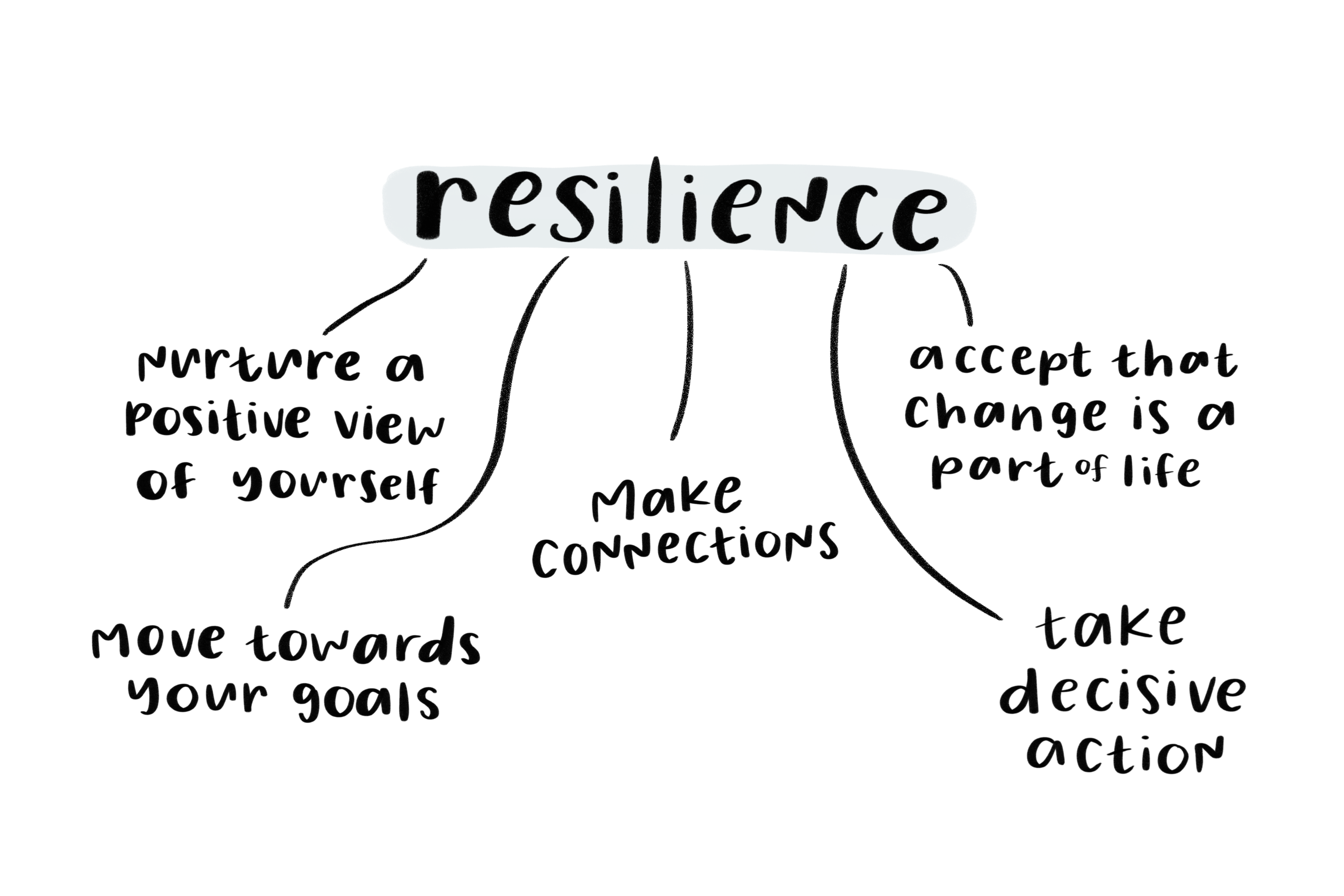
4. Cultivate Self-Reflection and Self-Awareness
Strategy: Engage in regular self-reflection and introspection to deepen your understanding of yourself, your values, and your goals.
1. Keep a Gratitude Journal
Strategy: Start a gratitude journal to regularly reflect on and appreciate the blessings, big and small, in your life.
Practice: Set aside time each day to write down three things you're grateful for, whether it's the support of loved ones, the beauty of nature, or moments of joy and laughter. Reflect on why you're grateful for each blessing and savor the positive emotions that arise from expressing gratitude.
Strategy: Cultivate a positive mindset by consciously focusing on the good in life and reframing challenges in a more positive light.
Practice: Practice positive self-talk and affirmations to counter negative thoughts and beliefs. Challenge pessimistic or catastrophic thinking by seeking out evidence of positive outcomes or silver linings in challenging situations. Surround yourself with positive influences, whether it's uplifting books, inspiring music, or supportive friends and mentors.
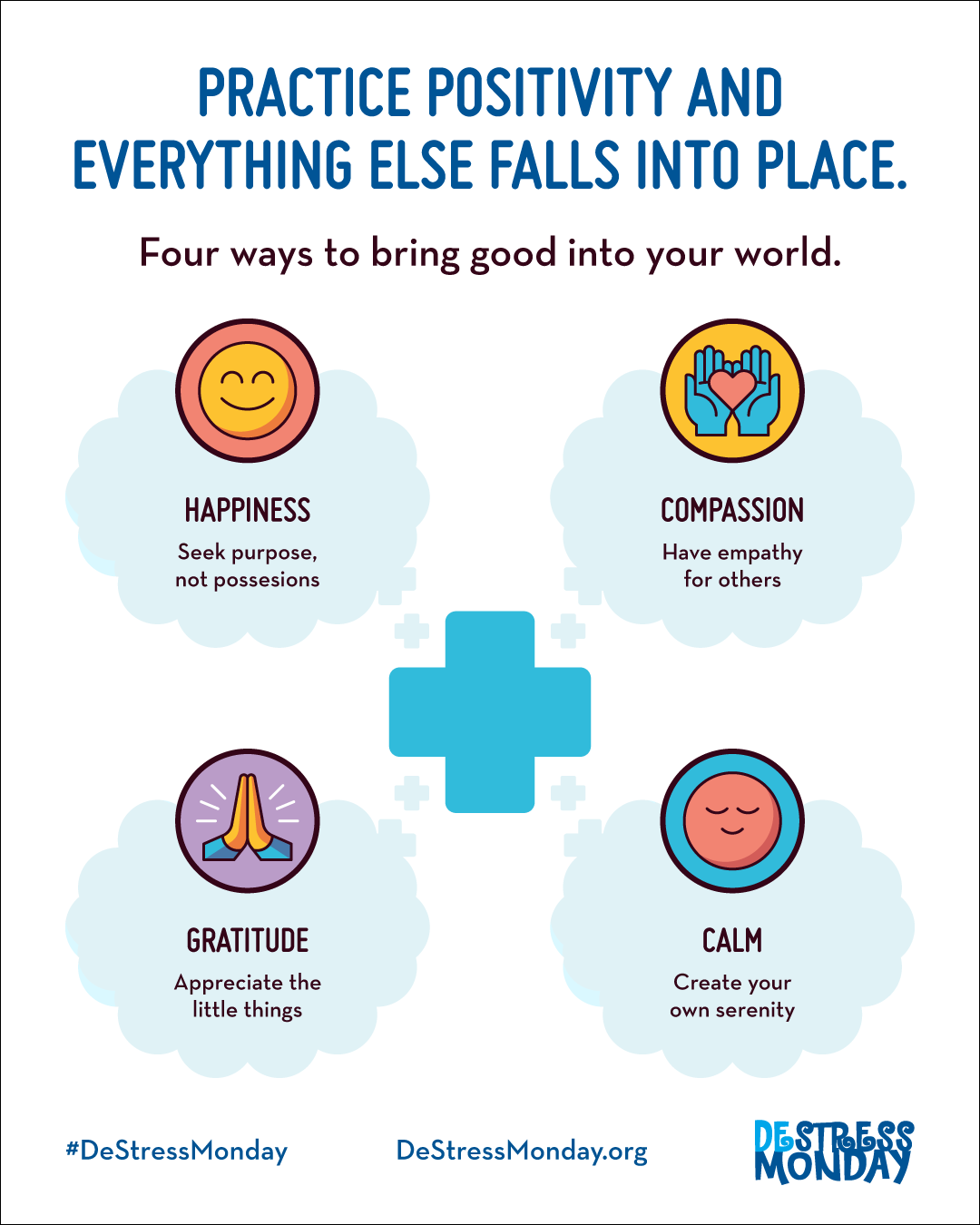
Balancing Work and Life
1. Set Boundaries and Prioritize Self-Care
Strategy: Establish clear boundaries between work and personal life to prevent burnout and prioritize self-care.
Eudaimonic Well-Being: Another important perspective on happiness is the eudaimonic approach, which focuses on the pursuit of meaning, fulfillment, and self-realization. According to eudaimonic theories, happiness is not solely dependent on the experience of pleasure but also on the cultivation of virtues, personal growth, and the pursuit of meaningful goals (Ryan & Deci, 2001). One underlying theoretical perspective is based on the self-determination theory (SDT) that offer insights into the sources of happiness and well-being. SDT proposes that individuals have innate psychological needs for autonomy, competence, and relatedness, and when these needs are satisfied, they experience greater levels of well-being and intrinsic motivation (Deci & Ryan, 2000). According to SDT, happiness arises from engaging in activities that fulfill these basic psychological needs and promote personal growth and fulfillment.
From this perspective, happiness is more than just feeling good; it involves living a life that is deeply satisfying and aligned with one's values and aspirations.
Cultivating inner well-being is essential for living a fulfilling and meaningful life. It involves nurturing our mental, emotional, and spiritual health, fostering resilience, and finding peace and contentment within ourselves. Here are some strategies and practices to help you cultivate inner well-being:
1. Practice Mindfulness
Strategy: Incorporate mindfulness into your daily routine to cultivate present-moment awareness and reduce stress.
Practice: Set aside time each day for mindfulness meditation, mindful breathing exercises, or simply being fully present in the moment. Pay attention to your thoughts, feelings, and sensations without judgment, and observe the world around you with curiosity and openness.
1. Practice Mindfulness
Strategy: Incorporate mindfulness into your daily routine to cultivate present-moment awareness and reduce stress.
Practice: Set aside time each day for mindfulness meditation, mindful breathing exercises, or simply being fully present in the moment. Pay attention to your thoughts, feelings, and sensations without judgment, and observe the world around you with curiosity and openness.
2. Cultivate Self-Compassion
Strategy: Cultivate self-compassion to foster kindness and acceptance toward yourself, especially during times of difficulty or self-criticism.
Practice: Treat yourself with the same kindness and understanding that you would offer to a close friend facing similar challenges. Practice self-compassionate self-talk, and recognize that imperfection is part of the human experience. Engage in self-care activities that nurture your physical, emotional, and spiritual well-being.
Strategy: Cultivate self-compassion to foster kindness and acceptance toward yourself, especially during times of difficulty or self-criticism.
Practice: Treat yourself with the same kindness and understanding that you would offer to a close friend facing similar challenges. Practice self-compassionate self-talk, and recognize that imperfection is part of the human experience. Engage in self-care activities that nurture your physical, emotional, and spiritual well-being.
3. Engage in Emotional Regulation
Strategy: Develop skills for managing and regulating your emotions effectively, allowing you to respond to life's challenges with resilience and equanimity.
Practice: Practice techniques such as deep breathing, progressive muscle relaxation, or visualization to calm your nervous system and reduce stress. Learn to identify and label your emotions accurately, and cultivate healthy coping strategies such as journaling, talking to a trusted friend, or engaging in creative expression.
Strategy: Develop skills for managing and regulating your emotions effectively, allowing you to respond to life's challenges with resilience and equanimity.
Practice: Practice techniques such as deep breathing, progressive muscle relaxation, or visualization to calm your nervous system and reduce stress. Learn to identify and label your emotions accurately, and cultivate healthy coping strategies such as journaling, talking to a trusted friend, or engaging in creative expression.
4. Prioritize Self-Care
Strategy: Prioritize self-care as an essential component of maintaining inner well-being and preventing burnout.
Practice: Set boundaries around your time and energy, and prioritize activities that nourish and replenish you. Engage in activities that bring you joy, whether it's spending time in nature, pursuing a hobby, or connecting with loved ones. Make time for rest, relaxation, and rejuvenation, and listen to your body's signals for rest and replenishment.
By incorporating these strategies and practices into your daily life, you can cultivate inner well-being, resilience, and emotional balance, allowing you to navigate life's challenges with greater ease and grace.
Fostering Meaningful Connections
Building and maintaining meaningful connections with others is essential for our overall well-being and happiness. Strong social bonds provide support, belonging, and a sense of connection that enriches our lives. Here are some strategies and practices to help you foster meaningful connections:
1. Prioritize Quality Over Quantity
Strategy: Focus on cultivating deep, meaningful connections with a few close individuals rather than superficial relationships with many acquaintances.
Practice: Invest time and energy in nurturing relationships with family members, close friends, and trusted confidants who share your values and support you unconditionally. Prioritize quality time spent together, whether it's sharing meals, engaging in meaningful conversations, or participating in activities you both enjoy.
2. Be Present and Fully Engaged
Strategy: Practice active listening and genuine engagement in your interactions with others to foster deeper connections and understanding.
Practice: When spending time with others, put away distractions such as phones or electronic devices and focus your attention fully on the present moment. Listen attentively to what the other person is saying, validate their feelings and experiences, and respond with empathy and authenticity. Show interest in their lives and perspectives, and be willing to share your own thoughts and feelings openly.
3. Foster Mutual Support and Encouragement
Strategy: Cultivate a supportive and nurturing environment within your relationships by offering encouragement, validation, and assistance when needed.
Practice: Be there for others during times of need, offering a listening ear, practical help, or emotional support. Celebrate their successes and milestones, and encourage them to pursue their goals and aspirations. Create opportunities for mutual growth and learning, and provide constructive feedback and guidance when appropriate.
4. Share Vulnerability and Authenticity
Strategy: Build trust and intimacy within your relationships by being vulnerable and authentic, allowing yourself to be seen and known for who you truly are.
Practice: Be there for others during times of need, offering a listening ear, practical help, or emotional support. Celebrate their successes and milestones, and encourage them to pursue their goals and aspirations. Create opportunities for mutual growth and learning, and provide constructive feedback and guidance when appropriate.
4. Share Vulnerability and Authenticity
Strategy: Build trust and intimacy within your relationships by being vulnerable and authentic, allowing yourself to be seen and known for who you truly are.
Practice: Share your thoughts, feelings, and experiences openly and honestly with trusted individuals, allowing yourself to be vulnerable and express your true self. Be willing to acknowledge your strengths and weaknesses, fears and insecurities, and share your authentic self with others. Create a safe and supportive space where vulnerability is met with empathy, understanding, and acceptance.
5. Create Rituals and Traditions
Strategy: Establish rituals and traditions that foster connection and strengthen bonds within your relationships.
Practice: Create meaningful rituals and traditions that bring you closer together, such as weekly family dinners, monthly game nights with friends, or annual holiday gatherings. These shared experiences help build shared memories, reinforce your sense of belonging and identity within the group, and provide opportunities for connection and celebration.
Pursuing Personal Growth and Fulfillment
Personal growth and fulfillment are essential components of living well and experiencing a sense of purpose and satisfaction in life. By continuously striving for self-improvement and pursuing meaningful goals, we can enhance our well-being and unlock our full potential.
Here are some strategies and practices to help you pursue personal growth and fulfillment:
1. Set Meaningful Goals
Strategy: Identify goals that align with your values, passions, and aspirations, and strive to achieve them with purpose and intention.
Practice: Take time to reflect on what matters most to you and what you hope to accomplish in different areas of your life, such as career, relationships, health, and personal development. Set SMART goals (Specific, Measurable, Achievable, Relevant, Time-bound) that are challenging yet attainable, and create a plan of action to work towards them systematically.
1. Set Meaningful Goals
Strategy: Identify goals that align with your values, passions, and aspirations, and strive to achieve them with purpose and intention.
Practice: Take time to reflect on what matters most to you and what you hope to accomplish in different areas of your life, such as career, relationships, health, and personal development. Set SMART goals (Specific, Measurable, Achievable, Relevant, Time-bound) that are challenging yet attainable, and create a plan of action to work towards them systematically.
2. Embrace Lifelong Learning
Strategy: Cultivate a growth mindset and a thirst for knowledge and self-improvement, embracing opportunities for learning and personal development.
Practice: Seek out opportunities for learning and growth in various forms, including formal education, workshops, seminars, online courses, and self-study. Challenge yourself to step outside your comfort zone, explore new interests, and acquire new skills and knowledge that enrich your life and expand your horizons.

3. Foster Resilience and Adaptability
Strategy: Develop resilience and adaptability to navigate life's challenges and setbacks with grace and perseverance.
Practice: Cultivate resilience by reframing setbacks as opportunities for growth and learning, rather than insurmountable obstacles. Practice self-care and stress management techniques to cope with adversity effectively, such as mindfulness, relaxation exercises, and seeking support from others. Embrace a flexible mindset that allows you to adapt to changing circumstances and learn from experience.

4. Cultivate Self-Reflection and Self-Awareness
Strategy: Engage in regular self-reflection and introspection to deepen your understanding of yourself, your values, and your goals.
Practice: Set aside time for quiet reflection and introspection, journaling, or meditation to explore your thoughts, feelings, and motivations. Ask yourself probing questions about your strengths, weaknesses, and areas for growth, and strive to become more self-aware and self-compassionate. Use feedback from others as an opportunity for growth and self-improvement, and seek constructive criticism to help you identify blind spots and areas for development.
5. Foster Meaning and Purpose
Strategy: Cultivate a sense of meaning and purpose in your life by aligning your actions with your values and contributing to something greater than yourself.
Practice: Reflect on what gives your life meaning and purpose, whether it's pursuing a meaningful career, nurturing relationships, giving back to your community, or pursuing creative endeavors. Identify ways to incorporate your values and passions into your daily life and work towards goals that resonate with your sense of purpose. Engage in acts of service, kindness, and altruism that contribute to the well-being of others and bring meaning to your life.
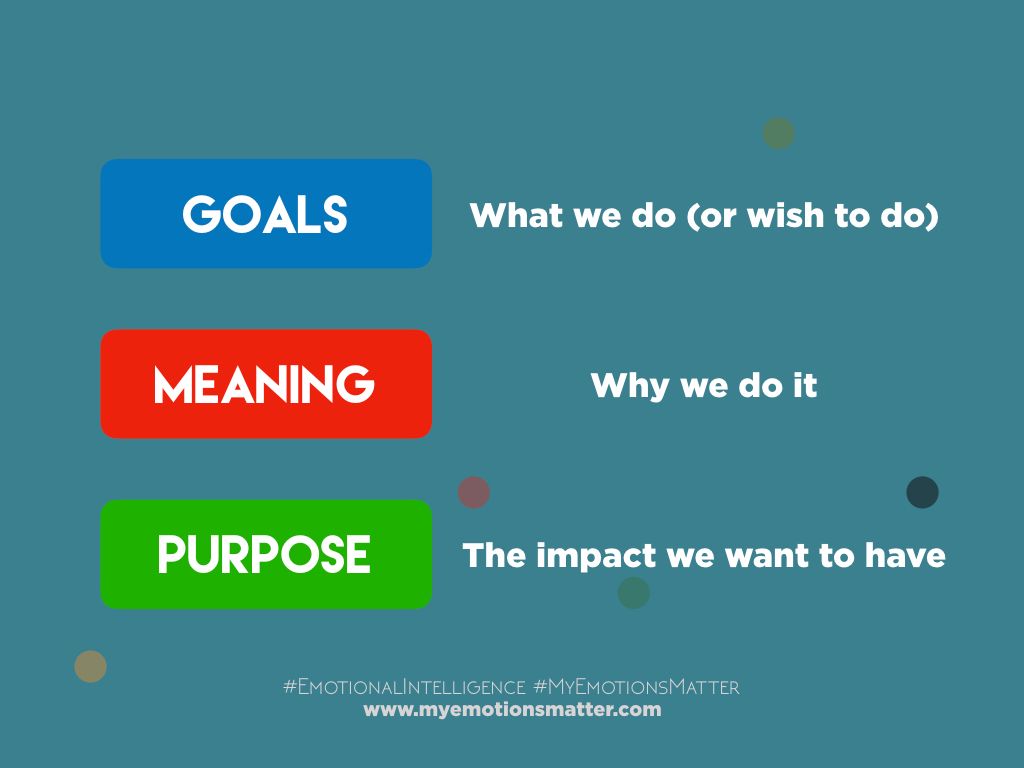

Embracing Gratitude and Positivism
Practicing gratitude and cultivating a positive perspective are powerful tools for enhancing well-being and finding joy and fulfillment in life. By shifting our focus from what's lacking to what's present and meaningful, we can cultivate a deeper sense of appreciation for the blessings in our lives and navigate challenges with resilience and optimism.
5. Foster Meaning and Purpose
Strategy: Cultivate a sense of meaning and purpose in your life by aligning your actions with your values and contributing to something greater than yourself.
Practice: Reflect on what gives your life meaning and purpose, whether it's pursuing a meaningful career, nurturing relationships, giving back to your community, or pursuing creative endeavors. Identify ways to incorporate your values and passions into your daily life and work towards goals that resonate with your sense of purpose. Engage in acts of service, kindness, and altruism that contribute to the well-being of others and bring meaning to your life.


Embracing Gratitude and Positivism
Practicing gratitude and cultivating a positive perspective are powerful tools for enhancing well-being and finding joy and fulfillment in life. By shifting our focus from what's lacking to what's present and meaningful, we can cultivate a deeper sense of appreciation for the blessings in our lives and navigate challenges with resilience and optimism.
Here are some strategies and practices to help you embrace gratitude and perspective.
1. Keep a Gratitude Journal
Strategy: Start a gratitude journal to regularly reflect on and appreciate the blessings, big and small, in your life.
Practice: Set aside time each day to write down three things you're grateful for, whether it's the support of loved ones, the beauty of nature, or moments of joy and laughter. Reflect on why you're grateful for each blessing and savor the positive emotions that arise from expressing gratitude.
2. Reframe Challenges as Opportunities
Strategy: Reflect on the present moment to shift your perspective from dwelling on the past or worrying about the future to fully experiencing the richness of the present. Train yourself to reframe challenges and setbacks as opportunities for growth, learning, and resilience.

Practice: When faced with difficulties or setbacks, consciously challenge negative thinking patterns and reframe the situation in a more positive and empowering light. Ask yourself what you can learn from the experience, how you can grow stronger as a result, and what opportunities for growth and self-discovery it presents.
3. Practice Acts of Kindness and Generosity
Strategy: Engage in acts of kindness and generosity to cultivate a spirit of gratitude and compassion towards others.
Practice: Look for opportunities to perform random acts of kindness and generosity, whether it's helping a neighbor in need, volunteering your time for a worthy cause, or expressing appreciation for the people in your life. Notice how acts of kindness and generosity not only benefit others but also bring joy and fulfillment to your own life.
Strategy: Reflect on the present moment to shift your perspective from dwelling on the past or worrying about the future to fully experiencing the richness of the present. Train yourself to reframe challenges and setbacks as opportunities for growth, learning, and resilience.

Practice: When faced with difficulties or setbacks, consciously challenge negative thinking patterns and reframe the situation in a more positive and empowering light. Ask yourself what you can learn from the experience, how you can grow stronger as a result, and what opportunities for growth and self-discovery it presents.
3. Practice Acts of Kindness and Generosity
Strategy: Engage in acts of kindness and generosity to cultivate a spirit of gratitude and compassion towards others.
Practice: Look for opportunities to perform random acts of kindness and generosity, whether it's helping a neighbor in need, volunteering your time for a worthy cause, or expressing appreciation for the people in your life. Notice how acts of kindness and generosity not only benefit others but also bring joy and fulfillment to your own life.
4. Cultivate a Positive Mindset
Strategy: Cultivate a positive mindset by consciously focusing on the good in life and reframing challenges in a more positive light.
Practice: Practice positive self-talk and affirmations to counter negative thoughts and beliefs. Challenge pessimistic or catastrophic thinking by seeking out evidence of positive outcomes or silver linings in challenging situations. Surround yourself with positive influences, whether it's uplifting books, inspiring music, or supportive friends and mentors.

Balancing Work and Life
Achieving a healthy balance between work and life is essential for overall well-being and satisfaction. It involves prioritizing self-care, setting boundaries, and creating harmony between professional responsibilities and personal pursuits. Here are some strategies and practices to help you balance work and life effectively:
1. Set Boundaries and Prioritize Self-Care
Strategy: Establish clear boundaries between work and personal life to prevent burnout and prioritize self-care.
Practice: Define specific work hours and stick to them, resisting the temptation to work beyond designated times. Schedule regular breaks throughout the day to rest and recharge, and prioritize activities that promote physical, mental, and emotional well-being, such as exercise, relaxation, and spending time with loved ones.
2. Practice Time Management and Prioritization
Strategy: Practice effective time management and prioritization to maximize productivity and minimize stress.
Practice: Use tools such as to-do lists, calendars, and time-blocking techniques to organize your tasks and allocate time for important priorities. Identify your most important and time-sensitive tasks each day and focus on completing them first. Learn to delegate tasks when necessary and say no to non-essential commitments to avoid overextending yourself.

3. Foster Flexibility and Adaptability
Strategy: Cultivate flexibility and adaptability in your approach to work and life to better navigate unexpected changes and challenges.
Practice: Embrace a flexible mindset that allows you to adapt to shifting priorities, deadlines, and circumstances. Be open to exploring alternative work arrangements, such as telecommuting or flexible scheduling, that better accommodate your personal needs and preferences. Practice resilience and problem-solving skills to overcome obstacles and setbacks with grace and perseverance.
4. Establish Clear Communication and Boundaries
Strategy: Communicate openly and effectively with your colleagues, supervisors, and loved ones to establish clear expectations and boundaries.
Practice: Clearly communicate your availability, work hours, and boundaries with colleagues and supervisors to ensure mutual understanding and respect. Set aside dedicated time for focused work without interruptions and communicate this to your colleagues or family members. Establish guidelines for responding to work-related communications outside of regular hours to prevent work from encroaching on personal time.
5. Prioritize Work-Life Integration
Strategy: Strive for work-life integration rather than strict separation, finding ways to align your professional and personal pursuits to create a harmonious and fulfilling life.
Practice: Look for opportunities to incorporate elements of your personal life into your workday, such as taking short breaks to connect with loved ones or pursuing hobbies and interests during downtime. Similarly, find ways to bring aspects of your work into your personal life, such as cultivating relationships with colleagues or finding meaning and fulfillment in your professional endeavors.
2. Practice Time Management and Prioritization
Strategy: Practice effective time management and prioritization to maximize productivity and minimize stress.
Practice: Use tools such as to-do lists, calendars, and time-blocking techniques to organize your tasks and allocate time for important priorities. Identify your most important and time-sensitive tasks each day and focus on completing them first. Learn to delegate tasks when necessary and say no to non-essential commitments to avoid overextending yourself.

3. Foster Flexibility and Adaptability
Strategy: Cultivate flexibility and adaptability in your approach to work and life to better navigate unexpected changes and challenges.
Practice: Embrace a flexible mindset that allows you to adapt to shifting priorities, deadlines, and circumstances. Be open to exploring alternative work arrangements, such as telecommuting or flexible scheduling, that better accommodate your personal needs and preferences. Practice resilience and problem-solving skills to overcome obstacles and setbacks with grace and perseverance.
4. Establish Clear Communication and Boundaries
Strategy: Communicate openly and effectively with your colleagues, supervisors, and loved ones to establish clear expectations and boundaries.
Practice: Clearly communicate your availability, work hours, and boundaries with colleagues and supervisors to ensure mutual understanding and respect. Set aside dedicated time for focused work without interruptions and communicate this to your colleagues or family members. Establish guidelines for responding to work-related communications outside of regular hours to prevent work from encroaching on personal time.
5. Prioritize Work-Life Integration
Strategy: Strive for work-life integration rather than strict separation, finding ways to align your professional and personal pursuits to create a harmonious and fulfilling life.
Practice: Look for opportunities to incorporate elements of your personal life into your workday, such as taking short breaks to connect with loved ones or pursuing hobbies and interests during downtime. Similarly, find ways to bring aspects of your work into your personal life, such as cultivating relationships with colleagues or finding meaning and fulfillment in your professional endeavors.
By implementing these strategies and practices, you can achieve a healthy balance between work and life, allowing you to thrive professionally and personally while prioritizing your well-being and happiness.
Conclusion
In the pursuit of living well, we embark on a journey of self-discovery, growth, and fulfillment. We navigate the ups and downs of life, seeking meaning, joy, and purpose amidst the complexities of our existence. Throughout this journey, we encounter challenges and opportunities, moments of triumph and moments of struggle. Yet, through it all, we strive to cultivate inner well-being, foster meaningful connections, pursue personal growth, embrace gratitude and perspective, and balance the demands of work and life.
As we reflect on the strategies and practices discussed in this blog post, we are reminded that living well is not a destination but a continuous process—a journey of self-exploration and self-transformation. It requires courage, resilience, and a willingness to embrace both the joys and the sorrows that life brings. It involves cultivating a mindset of gratitude and abundance, finding strength in vulnerability, and nurturing the relationships and activities that bring meaning and fulfillment to our lives.
Conclusion
In the pursuit of living well, we embark on a journey of self-discovery, growth, and fulfillment. We navigate the ups and downs of life, seeking meaning, joy, and purpose amidst the complexities of our existence. Throughout this journey, we encounter challenges and opportunities, moments of triumph and moments of struggle. Yet, through it all, we strive to cultivate inner well-being, foster meaningful connections, pursue personal growth, embrace gratitude and perspective, and balance the demands of work and life.
As we reflect on the strategies and practices discussed in this blog post, we are reminded that living well is not a destination but a continuous process—a journey of self-exploration and self-transformation. It requires courage, resilience, and a willingness to embrace both the joys and the sorrows that life brings. It involves cultivating a mindset of gratitude and abundance, finding strength in vulnerability, and nurturing the relationships and activities that bring meaning and fulfillment to our lives.
Ultimately, living well is about finding harmony within ourselves and with the world around us. It's about recognizing the beauty and wonder of life, even in the midst of adversity, and savoring each moment with gratitude and presence. It's about honoring our values, pursuing our passions, and making choices that align with our deepest desires and aspirations.
As you continue on your journey of living well, may you find the courage to embrace life's challenges with grace and resilience, the wisdom to cultivate meaningful connections and pursue personal growth, and the gratitude to cherish each moment as a gift. May you thrive in the pursuit of happiness, finding fulfillment in every aspect of your life, and inspiring others to do the same.
Thank you for joining us on this exploration of living well. May your journey be filled with joy, purpose, and abundant blessings.
As you continue on your journey of living well, may you find the courage to embrace life's challenges with grace and resilience, the wisdom to cultivate meaningful connections and pursue personal growth, and the gratitude to cherish each moment as a gift. May you thrive in the pursuit of happiness, finding fulfillment in every aspect of your life, and inspiring others to do the same.
Thank you for joining us on this exploration of living well. May your journey be filled with joy, purpose, and abundant blessings.


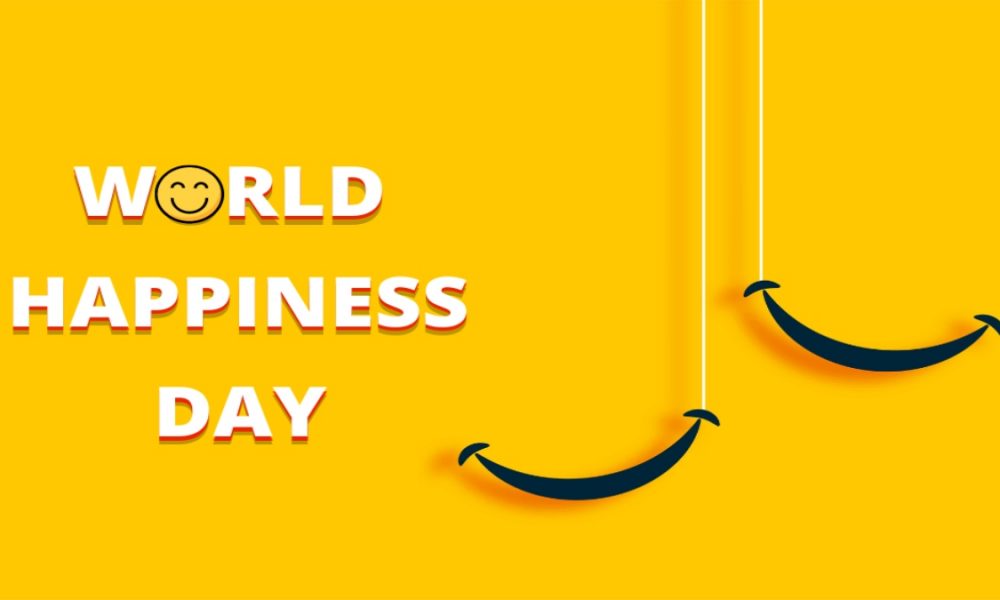


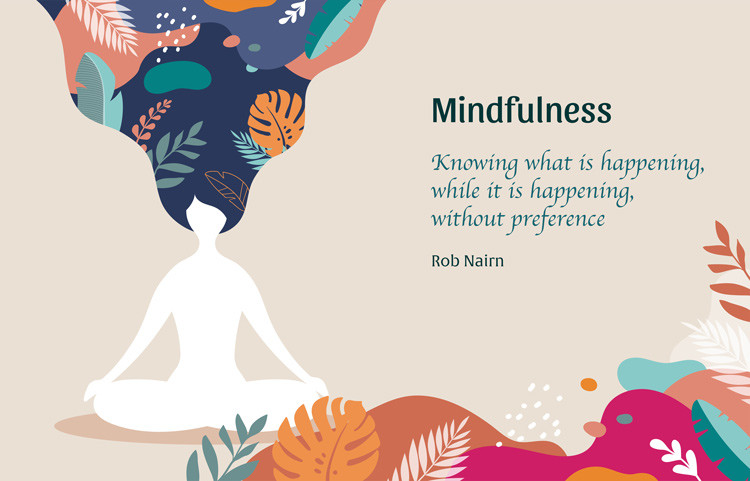



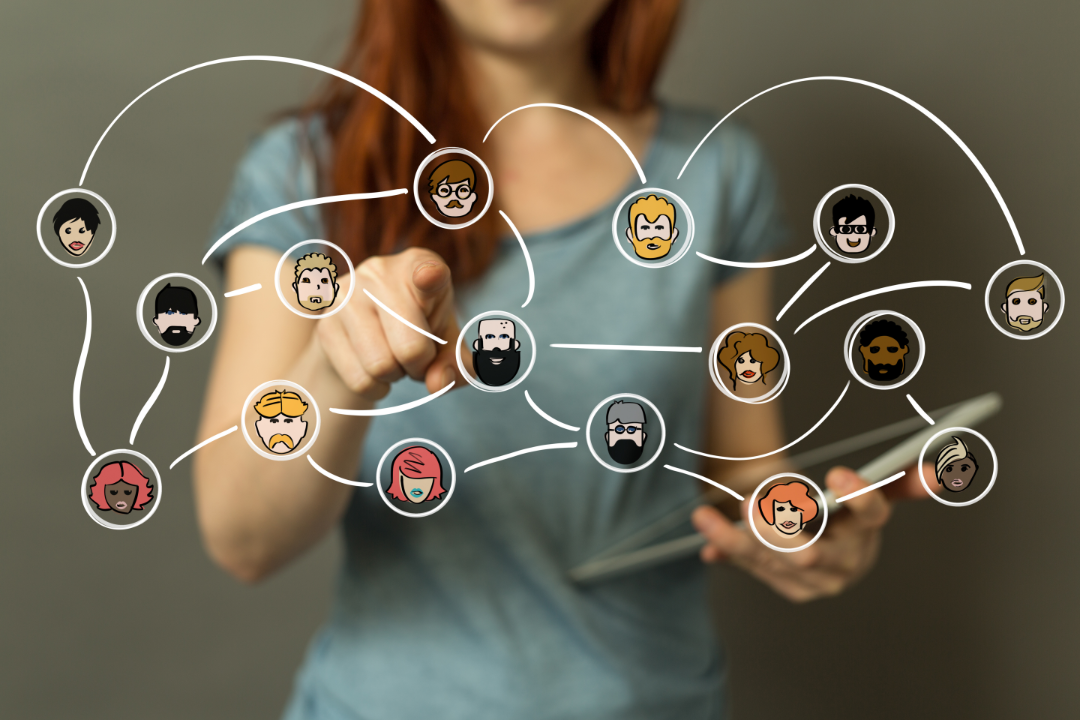
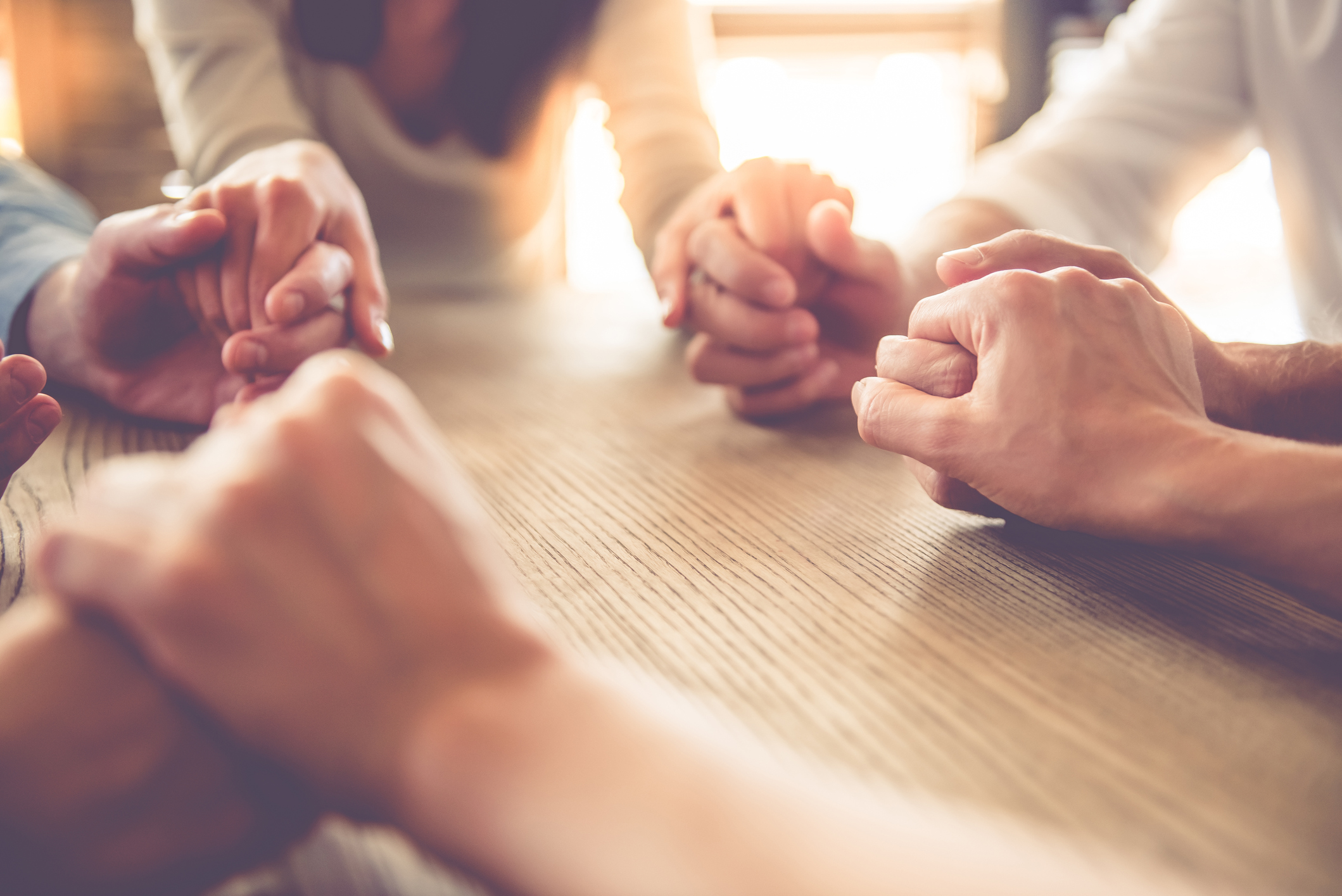
















Comments
Post a Comment